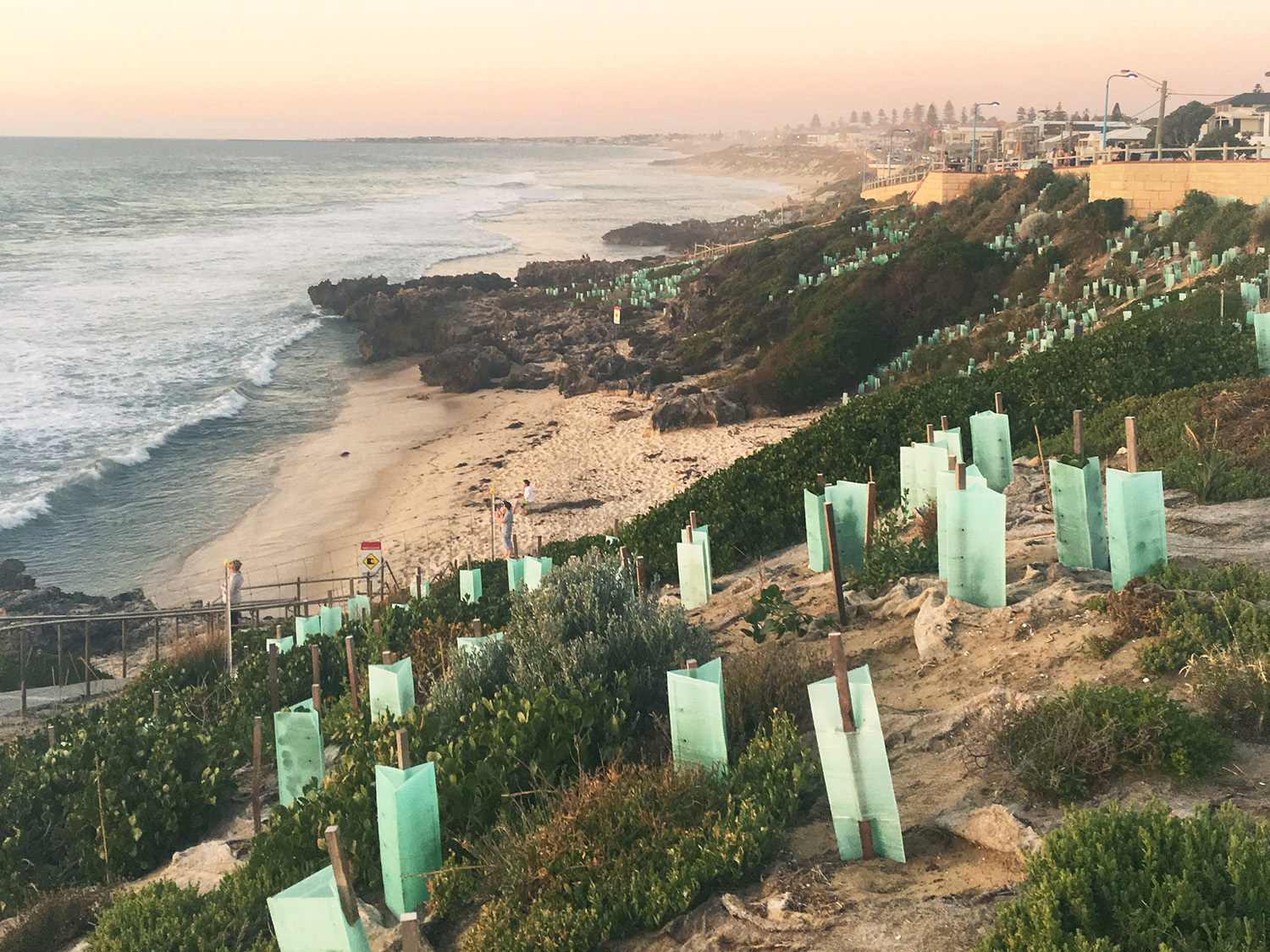Erosion is a natural part of tidal movement, but it can become destructive when humans interfere with the natural coastal structure.
What is erosion?
Sand and soil, and anything attached or growing in it, can be carried away by high rainfall and flooding, strong waves and high-water levels – these can be caused by large weather events such as storms and also rising sea levels. It can affect inland rivers and water bodies as well as coastal areas. Beaches in particular are meant to be dynamic – sand moves in and out with the tide, and erosion is simply the movement of sediment away from the coast.
Why is it a problem?
Erosion becomes a problem when this movement is greater than normal and creates a negative change in the natural system. It is becoming more common to see beaches narrowed after a big storm, with dunes carried away by high tides and water lapping at pathways. Houses that are built close to the ocean can find their house a bit closer to the waters edge, some eventually falling into the water.
What causes increased erosion?
Human influence is one of the biggest reasons why coastal erosion is increasing. Aside from global warming increasing sea levels through ice cap melting, when people start living and interacting with coastal regions the landscape is changed. Something as seemingly innocent as walking through dunes can have an impact on erosion. Making tracks through the sand disturbs the plants and their interlocking root systems, introducing weakness and decreasing the stability they provide to the dune structure.
What is being done?
Dunes are often fenced off to reduce human traffic, and coastal groups attend regularly to maintain the dunes and plant suitable species. Sand can be brought in to renourish a beach and to replace what is lost, either from other sand sources or being dredged from further off shore. Groins, long manmade structures of soil, cement and rocks that extend out from the beach, aim to break up waves and associated sand movement.
If erosion becomes too much of a problem, then a beach may be removed and replaced with a sea wall, which aims to protect the buildings and homes that are built nearby – it is a common sight in the United Kingdom.
What can you do?
One of the best ways to reduce erosion is to improve the management of coastal areas. Governments and groups are starting to invest in and implement Coastal Hazard and Risk Management Adaption Planning (CHRMAP) – a structured and science-backed way to plan for coastal change. Contact your local council to see what it has in place to combat erosion.
Supporting or joining your local Coast or Land Care group with planting and other stabilisation activities can also be a great way to learn more about your local coastal area and ways to prevent erosion.
Perth NRM’s Coastal and Marine program run regular planting and education events, for the general public, corporate and school groups. Events are promoted on our events page, social media and newsletters – or get in touch for more information.
Coastal and Marine is a Perth NRM program with funding from the WA State Government’s Natural Resource Management Program and Coastwest, in partnership with local coastal councils.
Partners
We acknowledge and appreciate the support of all our partners, supporters, funding bodies and sponsors.

